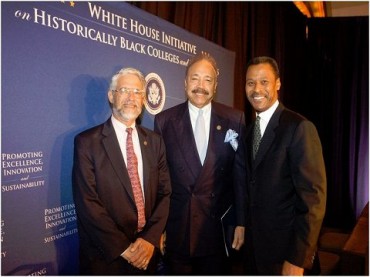
HBCUs — Historically Black Colleges and Universities — are the beneficiaries of more than $250 million of special federal monies set aside for them in 2011. In order to get an HBCU designation, an institution had to have been established prior to 1964 “whose principal mission was, and is, the education of black Americans.”
But what if the majority of an HBCU, sometimes a large majority, is … white? The Hechinger Reports notes:
At a handful, like Bluefield, blacks now comprise only half of enrollment, or less. At Alabama’s Gadsden State Community College, which is also historically black, 71 percent of the students today are white and 21 percent are black. So are half the students at Lincoln University in Missouri, while 40 percent are black. The enrollment at St. Philip’s College in Texas is half Hispanic and 13 percent black, according to 2011 enrollment data from the U.S. Department of Education.
But George Cooper, the executive director of the White House Initiative on HBCUs, says such wild demographic swings merely serve as examples of the modern-day flexibility of HBCUs. These schools still are, and always will be, legally considered historically black, he said.
“The definition is a federal definition,” Cooper said. “They’re living up to it.”
Richard Vedder, director of the Center for College Affordability and Productivity, argues that “If you’re going to give subsidies for institutions, you shouldn’t give it on the basis of some sort of historical [status].”
Like The College Fix on Facebook / Follow us on Twitter
IMAGE: US Dept. of Education/Flickr




Please join the conversation about our stories on Facebook, Twitter, Instagram, Reddit, MeWe, Rumble, Gab, Minds and Gettr.